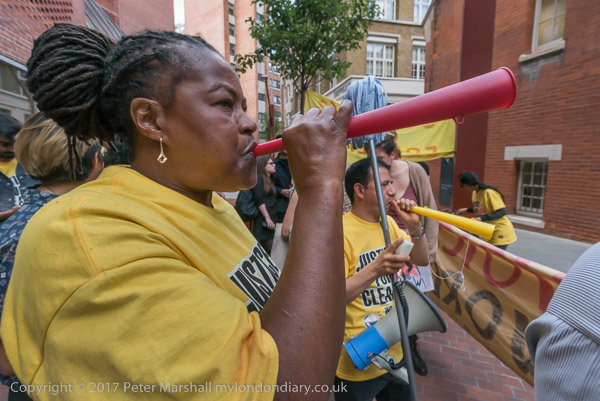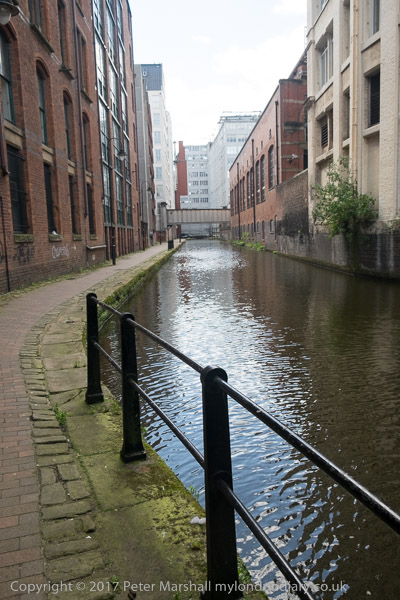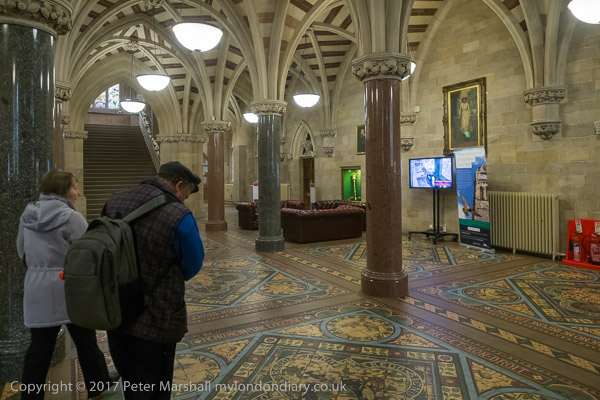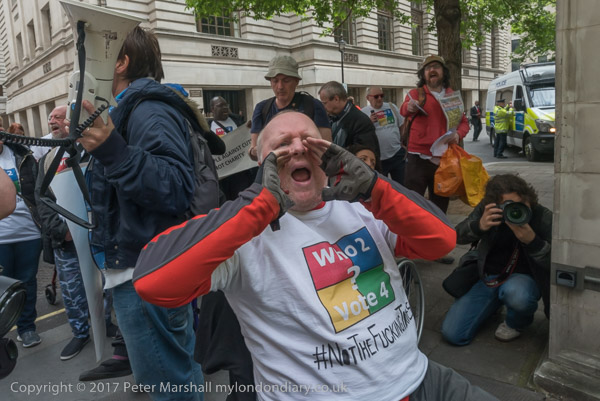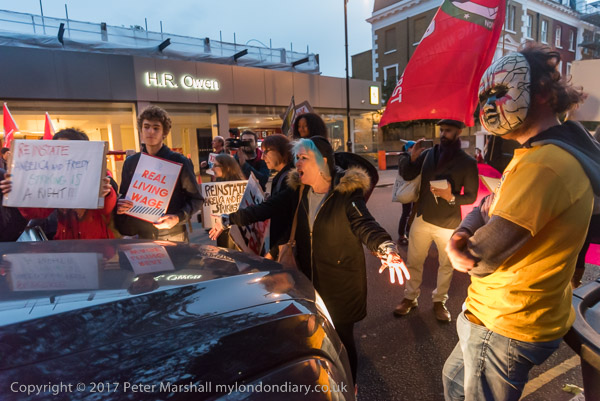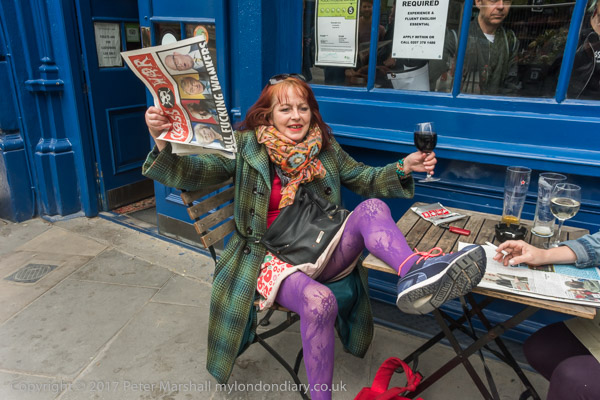Another week of my daily postings to Hull Photos which are continuing through all of Hull’s 2017 year as UK City of Culture. You can follow them daily where each picture appears, but the pictures appear with comments on Facebook – and in the weekly digests here.
Comments and corrections are welcome here or on Facebook.
20th October 2017
A second picture of Ellerman’s House at the end of Bishop Lane Staithe taken from just a few yards further down the riverside path shows the river frontage of this building, converted to flats around 2000. The shed bridging over the path and overhanging the river in this picture has now gone, though there is a faint echo in some cantilevered balconies on the converted building. Also gone is the Clarence Flour Mill in the background, and the barges, with only the museum trawler Arctic Corsair moored a little upstream from here.
The listed buildings on the north side of Bishop’s Lane Staith were for some years the Ellerman’s Wilson Line Bishops Warehouse (listed Grade II, “Former warehouse, now flats. 1655, rebuilt c1800, converted c2000”). John Ellerman from Hull was a man noted for being unnoticed, highly secretive and shunning all publicity, but he was made a baron in 1905 for supplying ships to the government during the Boer War. He became Britain’s richest man, leaving over over £36 million, mainly to his son, when he died in 1933.
John Ellerman was born at 100 Anlaby Rd in 1862, but moved away from the city. He started his shipping company in 1892 when with two others he bought 22 vessels from the executors of the Liverpool-based shipping firm Frederick Leyland and Co Ltd. The company expanded through a series of acquisitions and became Ellerman Lines in 1903, with offices in Liverpool, Glasgow and London, becoming the world’s larges shipping company. During the First World War, Ellerman, then the wealthiest man in Britain, bought the Wilson Line of Hull for about £4.3m after the Wilson family had been devastated by the sinking of three of its largest vessels and renamed it Ellerman’s Wilson Line. It continued to trade seperately until 1973. Despite this, Ellerman remains almost unknown in Hull, and doesn’t even rate a mention in the most detailed book on the history of the city.
In 1971, The founder’s son, also John Ellerman gave the funds from Ellerman Lines to set up a charitable foundation, the Ellerman Foundation, which supported Hull’s 2017 City of Culture programme with a grant of £200,000 to Hull Truck Theatre Company.

85-5j-36: Ellerman’s House & River Hull, 1985 River Hull
More about Ellerman.
21th October 2017
A similar tank to this still stands on the corner of Hodgson St and Lime St, part of the bulk storage facility of IBL Bulk Liquids, though while the ladder still looks the same, the skin of the tank is now different. IBL was formed in Hull in 1947.

85-5j-41: Shadow on bulk storage tank, Lime St, 1985 – River Hull
22nd October 2017
Another picture of one of the few remaining old houses in the area close to Wincolmlee, Victoria House, built around 1840 and still standing.
The ornate entrance into the yard, described in the Grade II listing text written 9 years after I made this picture as “wooden doorcase with enriched scroll bracket to cornice and panelled recess with C20 door” is now gone, with just a faint trace in in the brickwork as a reminder of its loss. When I took this picture the building was in use by a printing firm.

85-5j-61: Victoria House, Cooper St, 1985 – River Hull
23rd October 2017
The padlocked door to this building with the IN boldly marked also less clearly has a Champion spark plug logo, which clearly suggests the nature of the business which went on, or once went on, inside. The empty hole in the upper floor perhaps suggests the building was no longer in use, and I think it has since been demolished as I can no longer see it in the area. It was the next picture I took after the previous image on Cooper St and the frame after shows Paul’s granary on Wincolmlee, but my walks often wandered considerably
Perhaps what made me stop and take a picture was the twin four rod aerial, which I don’t recall having seen elsewhere, perhaps for CB or Ham radio or could it be for a taxi service? I hope someone can tell me more.

85-5j-62: Industrial premises, Green Lane/Wincolmlee area, 1984 – River Hull
24th October 2017
The road side of Paul’s riverside granary building next to Scott St Bridge, with a regular pattern of reinforcements and bricked up windows.
The raised pavement here is presumably because of frequent flooding on the low-lying road. The Cottingham Drain, now culverted, entered the River Hull a few yards off the left edge of the picture. Just a few yards further on is also the Beverley & Barmston Drain. The area is known as ‘High Flags‘, said to be because of the large flagstones of a wharf used for handling whale oil, but perhaps because of this raised path beside the road. High Flags Mill is a little further upstream, on the bank of the River Hull a little north of the ‘Barmy’ drain.

85-5j-63: Bricked up windows on Granary, Wincolmlee, 1985 – River Hull
25th October 2017
A more than usually artistic spray paint addition to the wall and porcelain of the urinal, with a undoubtedly female figure facing the male member of the user of the facility.
Hull had a large number of these street urinals, simple enclosures with tall walls and no roof, around the city, and they remained well-used both by workers during the day and by drinkers at night, when it wasn’t unusual for their to be a queue snaking outside some of the more popular locations. It isn’t entirely clear why the council decided they were no longer required, and their removal certainly led to a huge rise in men urinating in the streets at night. Public conveniences across the country were shut down around this time in a huge wave of anti-gay sentiment, and the provision of these male-only locations led to a demand by some for their closure rather than the more logical provision of new facilities for women.
As a then undiagnosed diabetic who spent long hours wandering the streets I felt their loss sometimes rather keenly. You can still see the traces of this structure with some glazed bricks in the wall and lying on the ground beside it overlooking the River Hull, and a little angle of brickwork provides some slight privacy for those still using it for its former purpose.

85-5j-64: Scott St Urinal, 1985 – River Hull
26th October 2017
A smokehouse with 15 chimneys along its peak must be one of the finest examples of the type in Hull. Although it is still standing it has been considerably altered and all the chimneys have gone.
Despite their significance in the history of the city, none of the nine existing buildings on the local list has been given national listing – something that would certainly have been appropriate as a part of the celebrations of Hull2017.
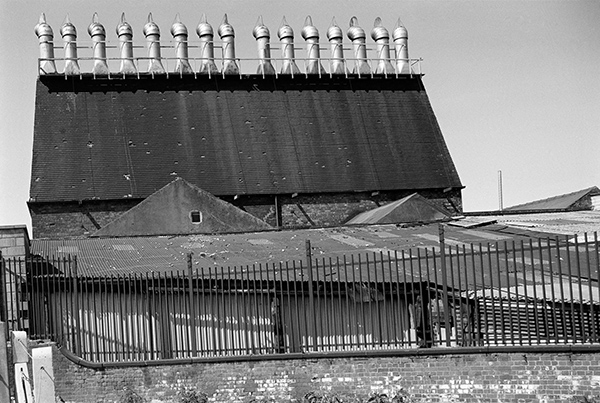
85-5k-14: Fish Smokehouses, Subway St, 1985 – Hessle Rd
You can see the new pictures added each day at Hull Photos, and I post them with the short comments above on Facebook.
Comments and corrections to captions are welcome here or on Facebook.
Continue reading Hull Photos: 20/10/17 – 26/10/17

